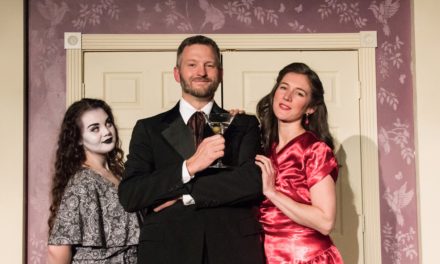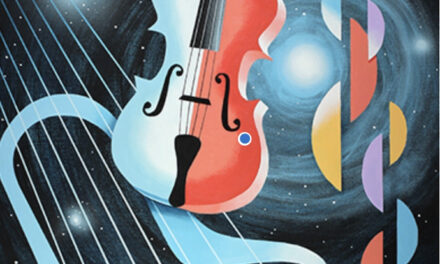By Daniel Buckwalter
Every so often in the dead of winter, with no letup in sight from rainy (or snowy) gray skies, a ray of sunshine can grace a stage for an evening of music.
That certainly was the case on Jan. 10, 2024, when the Stiletto Brass Quintet, complete with their trademark red high-heeled shoes, took the stage at the University of Oregon’s Beall Concert Hall with a vibrant and soulful evening of music that featured works celebrating New York City’s Central Park, life during COVID, the paintings of an Irish artist, and even a salute to the flexibility of copper.
The quintet — trumpeters Amy Gilreath and Susan Rider, French horn player Stacie Mickens, trombonist Natalie Mannix and tuba player Velvet Brown — entertained an appreciative audience with exquisite control in the more frantic pieces and with heartfelt touch for the lyrical pieces.
Now in its 14th year, Stiletto has had a revolving cast over the years. Gilreath and Brown are founding members of the group, and all of them perform professionally with other ensembles as well as holding professor positions at universities throughout the U.S.
There is a delightful crispness to the group, which opened the Beall Hall concert with the lively Drew Bonner composition Scarpe!, then pivoted immediately with David Chesky’s Central Park Morning, a wonderfully tranquil piece that carries the listener through an early morning in the park with the overnight lights still shining.
Stiletto searches far and wide, however, to spotlight female composers, and for Tempesta (Italian for storm), the group looked no further than to Brown, the tuba player, who composed the piece in 2021 as an exhaustive tribute, if you will, to the COVID lockdown.
She explained that Tempesta, like each day during the pandemic, begins with promise, then descends into chaos. In Brown’s case, that chaos included trying to teach her students at Penn State via Zoom while also trying to navigate her son’s virtual studies, often with computer links breaking down.
Tempesta ends with a crash, much like, Brown noted, the way her days ended during the pandemic. Who among us can’t relate?
The four-movement Sea Suite by Irish born composer Dorothy Gates was another favorite. It’s a tribute to another Irish woman, the artist Glynis Burns, and Burns’ art projected on the large screen behind Stiletto lent visual charm to the music.
As for Copperwave by composer Joan Tower — the salute to copper that I noted earlier — I’m not sure how to explain the piece. Frankly, I had never thought a great deal about copper before this concert, but I enjoyed this work’s quick pace and complex rhythms (not to mention Stiletto’s mastery of those rhythms), and I hope you get to hear it sometime.
I also hope everyone gets to hear from Stiletto Brass Quintet in the future. It is an ensemble sure to bring a ray of sunshine to a stormy winter night.
(More about the Stiletto Brass Quintet online at stilettobrass.com)









